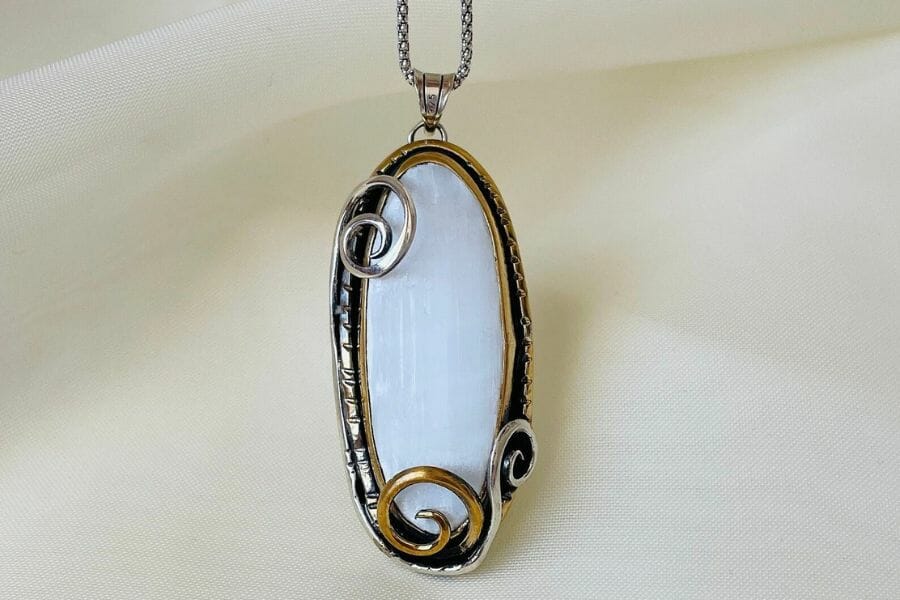Selenite, a translucent variety of gypsum, has been catching the attention of many crystal enthusiasts lately. Its ethereal appearance, combined with its healing properties, has made it a highly sought-after mineral. But what makes selenite so valuable, and why does it come with a high price tag?
Selenite is a highly spiritual crystal. It’s believed to have a strong connection with the divine and is often used in spiritual practices such as meditation and energy healing. Its translucent nature allows light to pass through it, creating a calming effect that can help soothe the mind and body.
But what about its price and worth? Selenite is not an easy mineral to mine, and its fragile nature makes it difficult to transport and handle. This, coupled with its high demand, has caused its price to increase significantly in recent years. So, let’s look into what makes selenite valued in the current market.
What Selenite Is
Selenite is a soft sulfate mineral that is composed of calcium sulfate dihydrate. It is named after the Greek word “Selene,” which means “moon,” due to its iridescent, almost ethereal appearance. Selenite is known for its transparency and is often used for decorative purposes such as lamps, vases, and other ornaments.
In its natural state, selenite forms in long, slender crystals often found in caves and other underground formations. It is also found in sedimentary rocks and in evaporite deposits, which are formed by the evaporation of seawater or other saline solutions. Selenite can range in color from white to clear, and its transparent nature allows light to pass through it, giving it a beautiful glow that crystal enthusiasts highly value.
Below is a list of the types of selenite. Selenite comes in different types, so these are only some more common ones.
Satin Spar
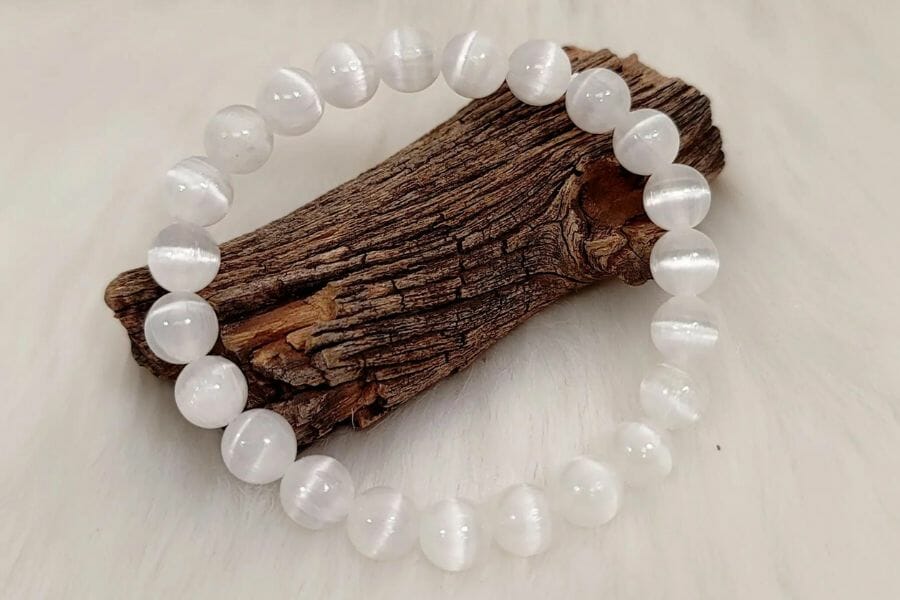
Satin spar is a type of selenite known for its fibrous, satin-like appearance. Its translucent to opaque mineral is composed of gypsum and has a silky, fibrous texture that can be polished to a high luster. Satin spar gets its name from its soft sheen and is often used for decorative purposes due to its unique appearance.
Satin spar typically forms in large masses, often associated with other minerals such as calcite and halite. Its fibers can grow several inches long, creating a delicate, flowing appearance that collectors highly value.
Satin spars can be found in various locations worldwide, including Mexico, Morocco, and the United States. Its silky texture and ethereal appearance make it famous for creating lamps, decorative objects, and other ornaments.
How much is satin spar worth
Each type of satin spar has a different price because they all have distinctive traits. Depending on the size and quality, you can find it for anywhere from $0.04 to $0.16 per carat.
Desert Rose
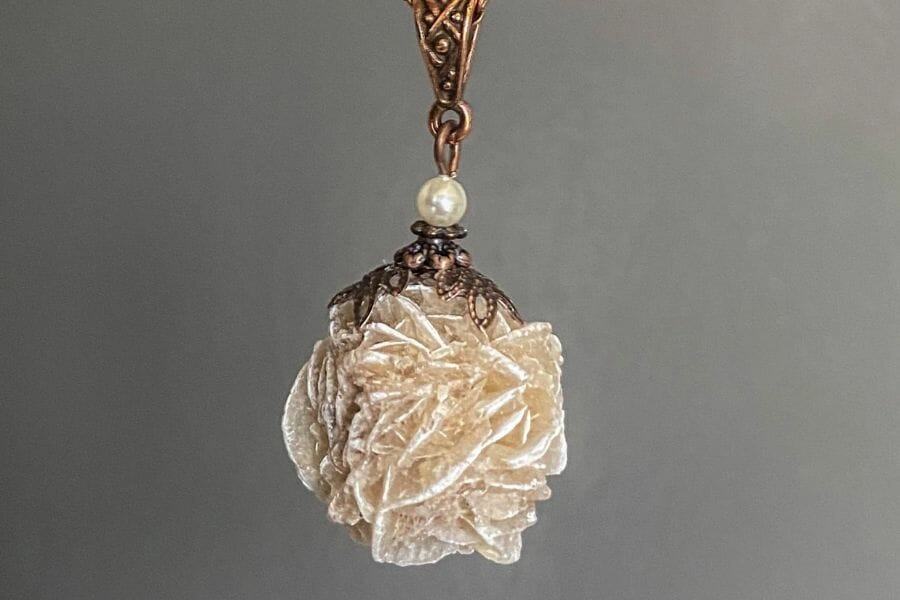
A desert rose is a unique type of crystal formation found in arid desert regions worldwide. It’s not a rose but a formation of gypsum crystals resembling a flower’s petals. Desert roses are typically found in sandy soils with little vegetation and are formed through evaporation and crystallization.
Desert roses can range from small, palm-sized formations to large clusters weighing several pounds. They typically comprise intergrown, tabular gypsum crystals arranged in a flower-like pattern. The crystals are usually white or light tan, but they can also be found in shades of pink, red, and brown. Collectors value desert roses for their unique appearance, often used for decorative purposes such as paperweights and bookends.
How much is a desert rose worth
Because each desert rose has a unique feature, they come in various prices. It can cost anywhere between $0.04 to $0.16 per carat.
Gypsum Flower
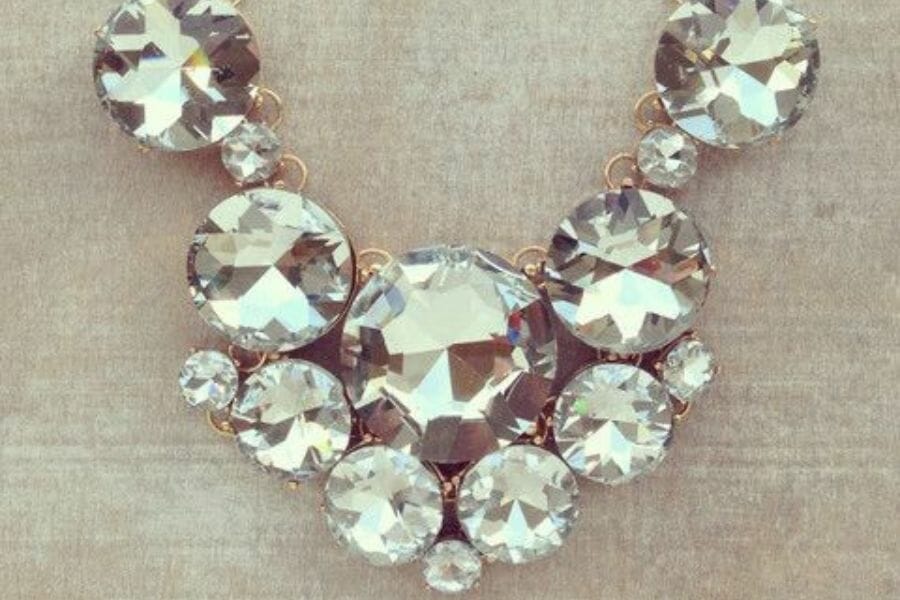
A gypsum flower, also known as a gypsum rose, is a mineral formation composed of intergrown, radiating gypsum crystals. It gets its name from its flower-like appearance, with the crystals arranged in a petal-like pattern. Gypsum flowers are typically found in high concentrations of caves and other underground formations.
Gypsum flowers can range in size from small, delicate formations to large clusters that can weigh several pounds. They are often found in colors ranging from white to light pink or gray, and their unique structure and delicate appearance make them highly valued by collectors.
Gypsum flowers are formed through evaporation and crystallization, with water seeping through the rock and depositing gypsum crystals over time. Due to their fragile nature, gypsum flowers are often left in their natural setting and are not frequently used for decorative purposes.
How much is a gypsum flower worth
Every gypsum flower has different prices. These range in price from $0.04 to $0.16 per carat, depending on the size and grade.
Why Selenite Is So Expensive
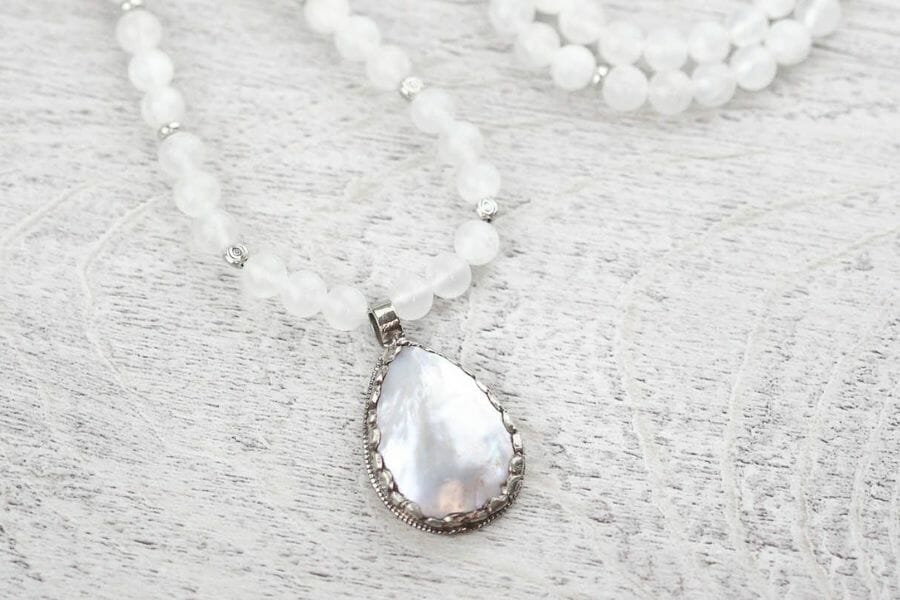
Selenite’s translucent nature and pearlescent appearance are highly valued by collectors for decorative purposes. Selenite lamps, vases, and other ornamental objects are popular due to their calming effect and unique beauty.
Selenite has also become highly valued in the crystal community due to its unique properties and benefits. It has been known for its ability to absorb negative energies and transform them into positive ones, making it a powerful tool for clearing negative energy and promoting healing.
Aside from its spiritual benefits, selenite is also highly valued for its physical properties. It’s a highly sought-after crystal for protection and cleansing and is often used in energy healing sessions to help clear and balance the energy field. Selenite is believed to be one of the few crystals that can cleanse and charge other crystals, making it an essential tool for crystal healers.
How To Determine The Value Of Selenite
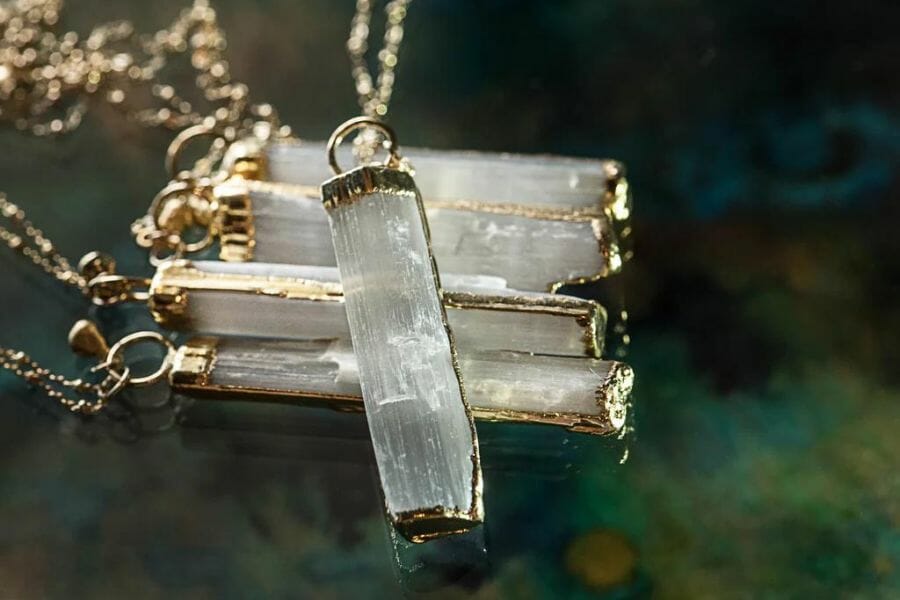
Selenite prices are impacted by several factors, which can help buyers in making informed decisions. The following factors are the primary determinants of selenite pricing:
Size
The size of a selenite crystal can significantly impact its price. Larger, more substantial pieces generally command higher prices, while smaller specimens may be more affordable.
Clarity and transparency
Selenite’s appeal often lies in its transparency and optical properties. Crystals with higher clarity and fewer inclusions or imperfections are more desirable and can fetch higher prices.
Color
Selenite is typically colorless, but it can also exhibit a range of hues, such as orange, pink, or green, due to other minerals or impurities. Some colors may be more sought-after or rare, influencing the price.
Shape and formation
Unique and aesthetically pleasing crystal formations, such as towers, wands, or clusters, can increase the value of a selenite specimen. Crystals with well-defined shapes and edges are generally more desirable and can command higher prices.
Quality of cut and polish
Selenite specimens skillfully cut and polished can fetch higher prices than those with rough or uneven surfaces. A well-finished piece can enhance the crystal’s natural beauty and make it more attractive to buyers.
Rarity
Some selenite varieties or formations are rarer than others, which can drive up their value. Specimens sourced from specific locations or featuring unusual characteristics may be more collectible and demand higher prices.
Provenance
The origin of a selenite specimen can influence its price, particularly if it comes from a well-known or historically significant location. Collectors may be willing to pay more for pieces with a documented history or connection to a particular place.
Market demand
The price of selenite can fluctuate based on market demand and trends. When selenite becomes popular for its healing properties or aesthetic appeal, prices may increase due to higher demand.
Selenite Price By Type
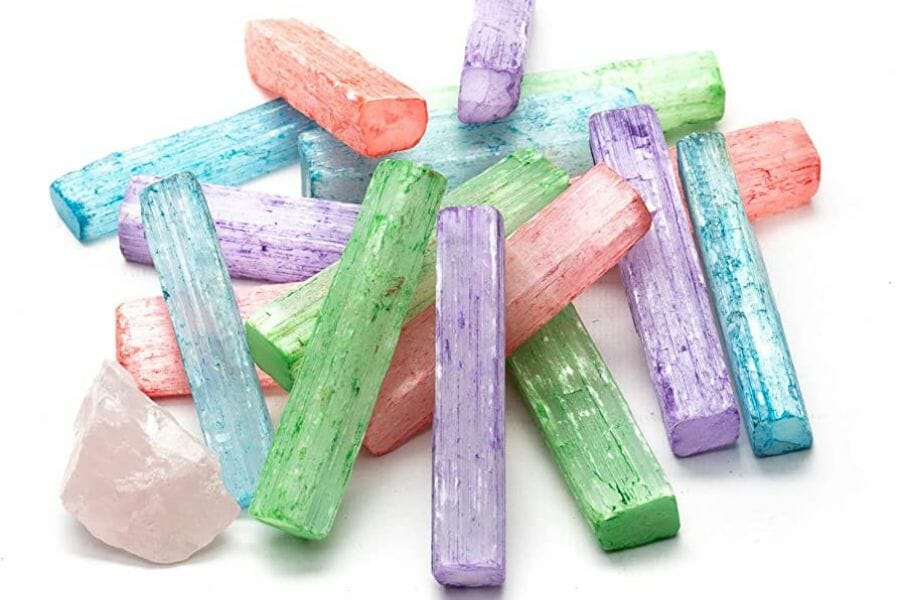
Good quality selenite often costs between $0.04 and $0.16 per carat. Rarer specimens could, however, command higher-than-average prices.
The price of selenite can vary greatly depending on the factors mentioned above. Small raw pieces of selenite can be purchased for a few dollars. At the same time, larger, high-quality specimens with unique formations, clarity, or color can fetch hundreds or even thousands of dollars. It’s essential to research and compare prices from reputable sellers and consider the factors influencing the value of the specific selenite specimen you want.
Selenite pricing by unit of measurement
| Measurement | Price |
| A carat of selenite | $0.04 – $0.16 |
| A gram of selenite | $0.20 – $80 |
| An ounce of selenite | $6 – $2,270 |
| A kilogram of selenite | $200 – $80,000 |
| A pound of selenite | $91 – $36,290 |
| A ton of selenite | $181,440 – $72,574,800 |
How To Get An Appraisal On Your Selenite
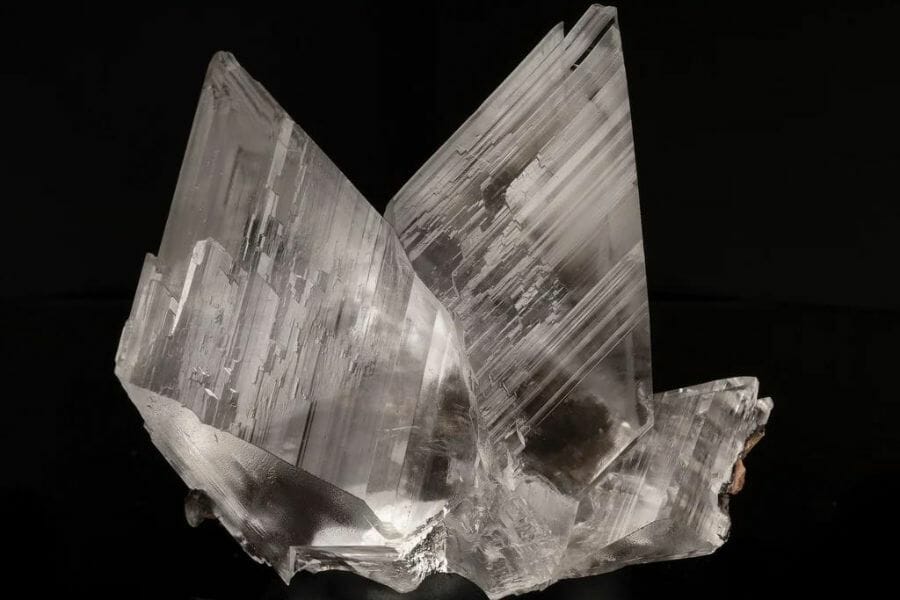
Research and find a reputable appraiser who specializes in minerals and crystals. Look for an appraiser or organization with experience and expertise in evaluating selenite specimens, such as the American Society of Appraisers. Contact the appraiser to schedule an appointment or inquire about their appraisal services. Some appraisers may be able to provide a preliminary evaluation based on photos or descriptions of the specimen.
Bring the selenite specimen to the appraiser for evaluation. The appraiser will examine the specimen’s size, color, clarity, formation, cut, polish, and any other factors that may influence its value. The appraiser will then estimate the specimen’s value based on their evaluation. This estimate may be a range rather than a specific amount, depending on the variability of factors influencing the specimen’s value.
It’s important to note that getting an appraisal can be costly, and the specimen’s value may not always align with the appraiser’s estimate. Therefore, it’s a good idea to research prices and compare prices from multiple sources to ensure a fair price for your selenite specimen.

